Greenwich Beach is a stretch of the Thames foreshore close to the Old Royal Naval College in Greenwich. Unlike other beaches on the Thames, Greenwich Beach is mostly made up of sand. It also has historic connections with the royal family, since it is next to the former site of Greenwich Palace, where Henry VIII was born and spent much of his time.
This post contains everything you need to know about visiting Greenwich Beach.
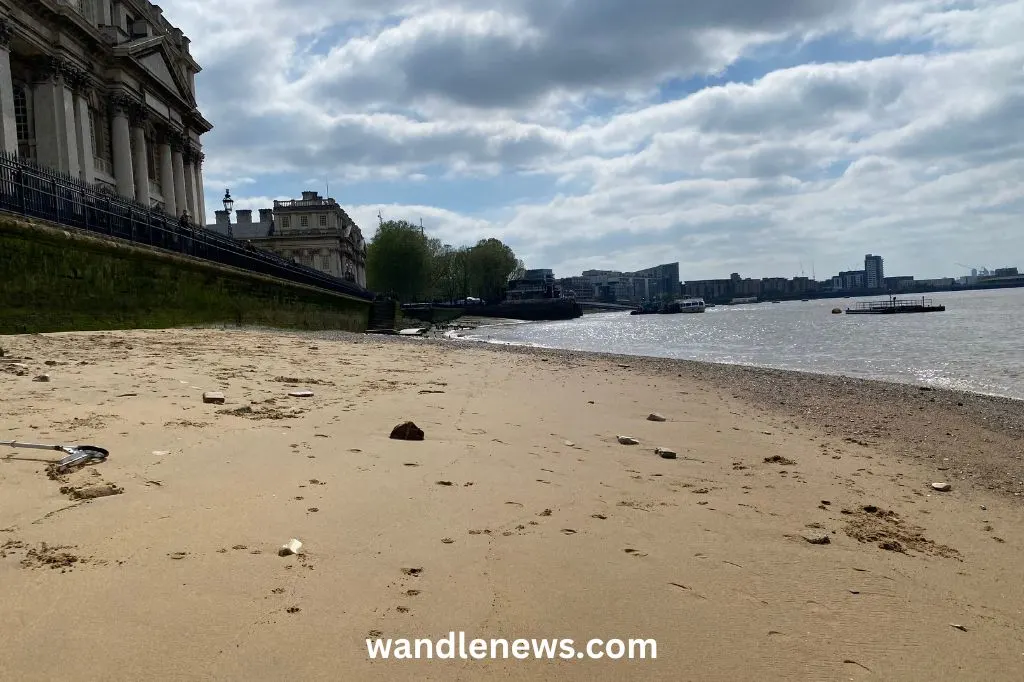
Location of Greenwich Beach
Greenwich Beach runs alongside the Old Royal Naval College, Greenwich Hospital, and the University of Greenwich.
At the eastern end of the beach is the Trafalgar Tavern pub, and the Globe Rowing Club, and at the western end is Greenwich Pier.
The nearest station to Greenwich Beach is Cutty Sark on the DLR. Alternatively, you can travel to Greenwich Pier via the Thames Clipper.
The map below shows two sets of staircases which lead onto Greenwich Beach. These are marked in purple.
About Greenwich Beach
Unlike other beaches on the River Thames, the main central part of the beach in Greenwich is made up of sand. This means it looks more like a seaside beach than other beaches along the river.
Although the beach contains large sandy areas however, it is not a traditional beach, and certainly not a place for swimming, walking barefoot or building sand castles.
The Thames foreshore contains nails, broken glass, needles and sharp stones. The water is also unsafe since it has traces of raw sewage and rat urine, which can cause Weil’s Disease.
Greenwich Beach is mainly popular with mudlarks, dog walkers, and tourists who go down to see the views of the O2 and Canary Wharf. For safety reasons it is not a place for sunbathing or swimming.
The photographs below were taken on the central area of the beach which is mostly sand.
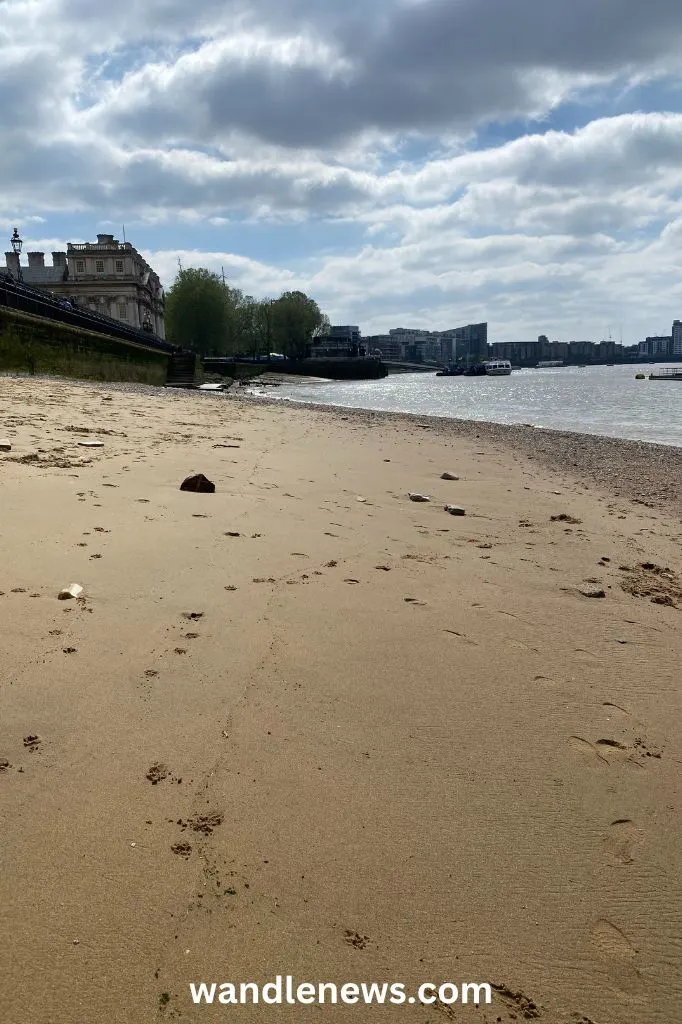
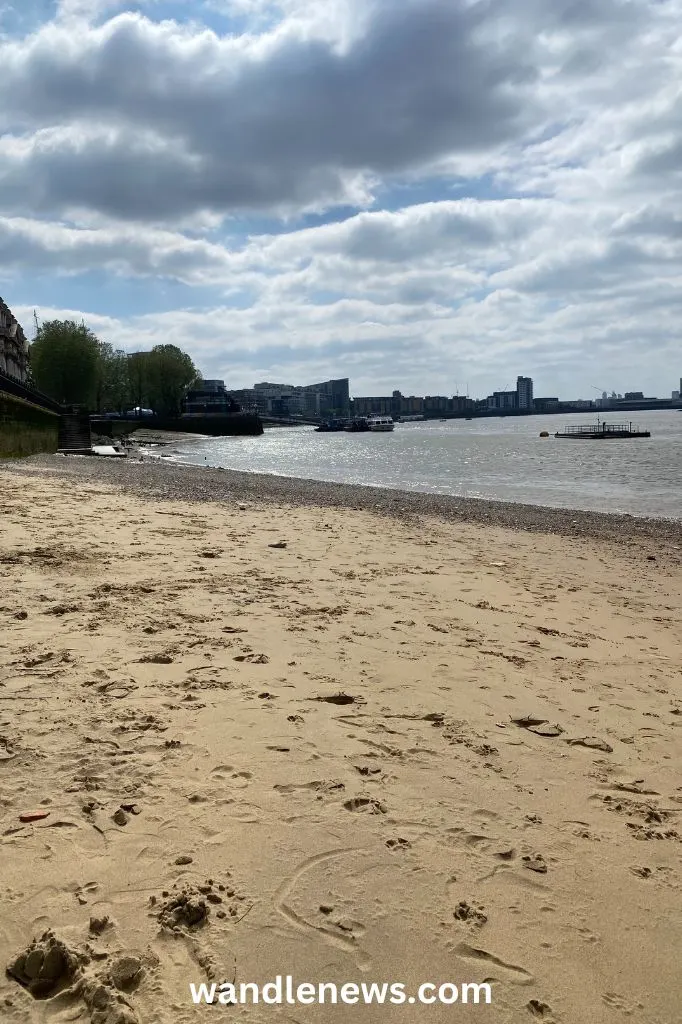
The section of Greenwich Beach shown in the photographs below, is at the eastern end where there are large stones, pebbles and animal bones. There is another set of stairs at this end, but these are closed off and you cannot exit the foreshore from here.
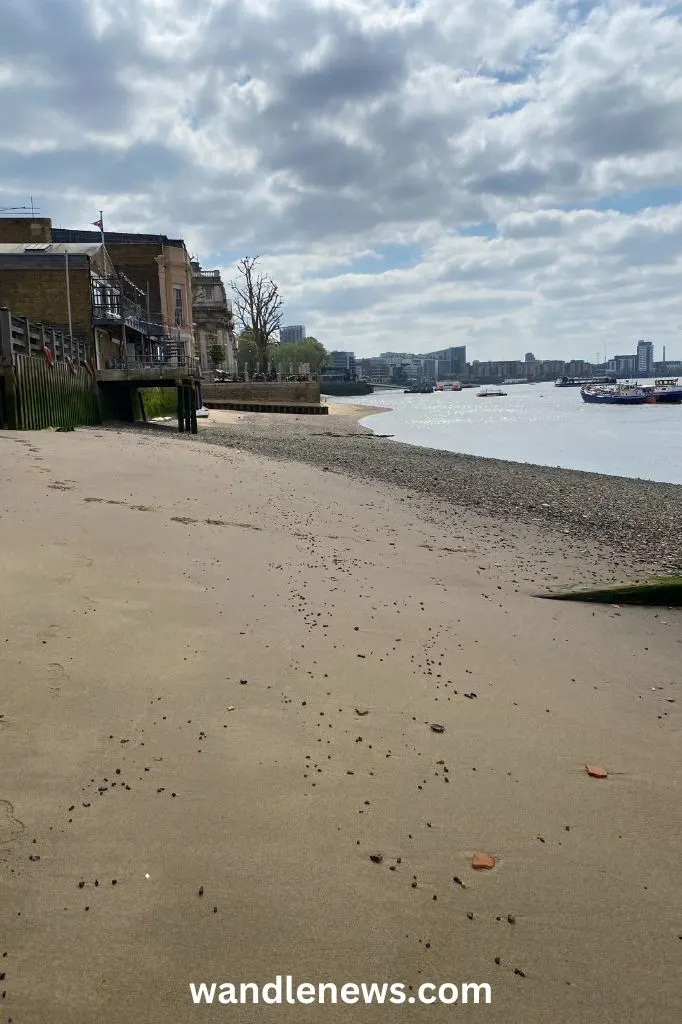
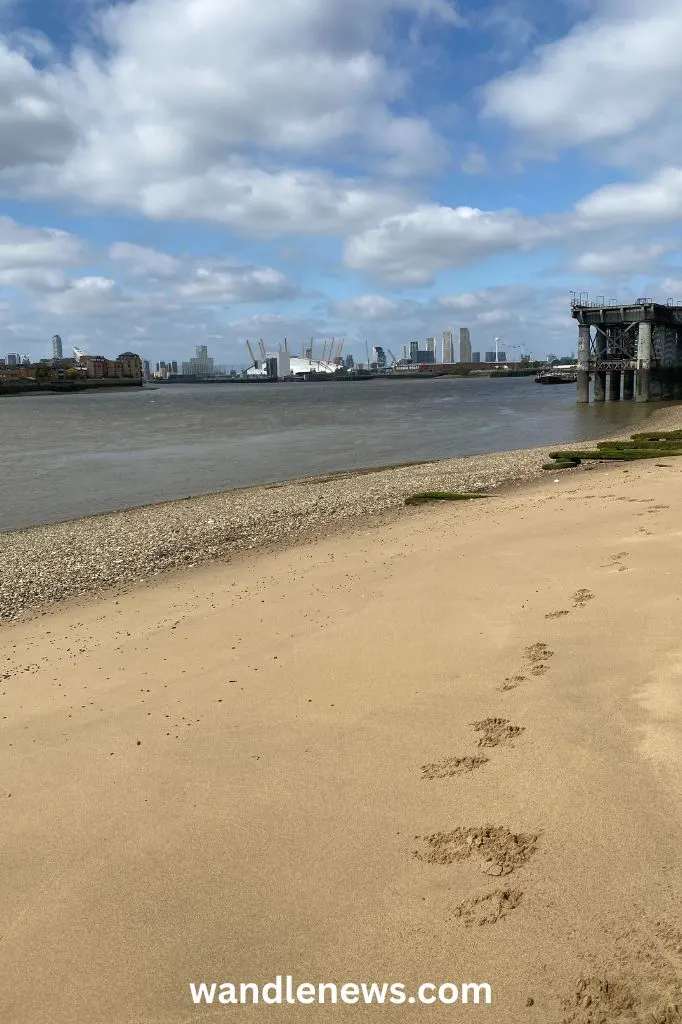
Stairs onto the Thames Foreshore
There are two main sets of stairs onto Greenwich Beach. Neither have a hand rail, and both are covered in green algae, so caution should be taken when using them.
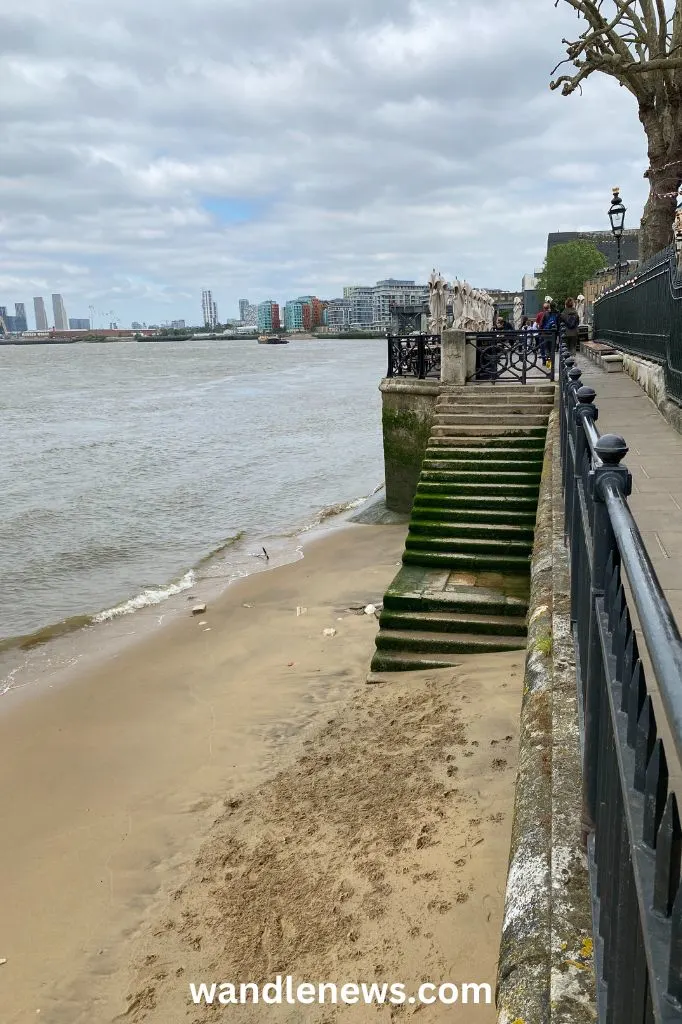
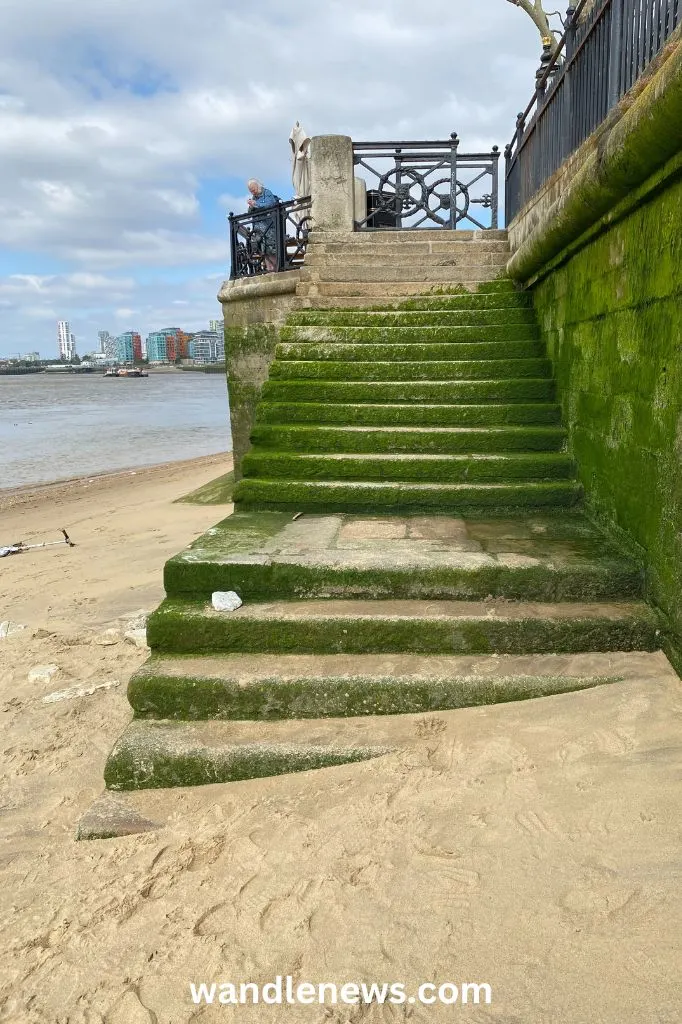
You should also check the tide times before visiting Greenwich Beach since, as you can see from the photograph below, the entire beach is covered at high tide.
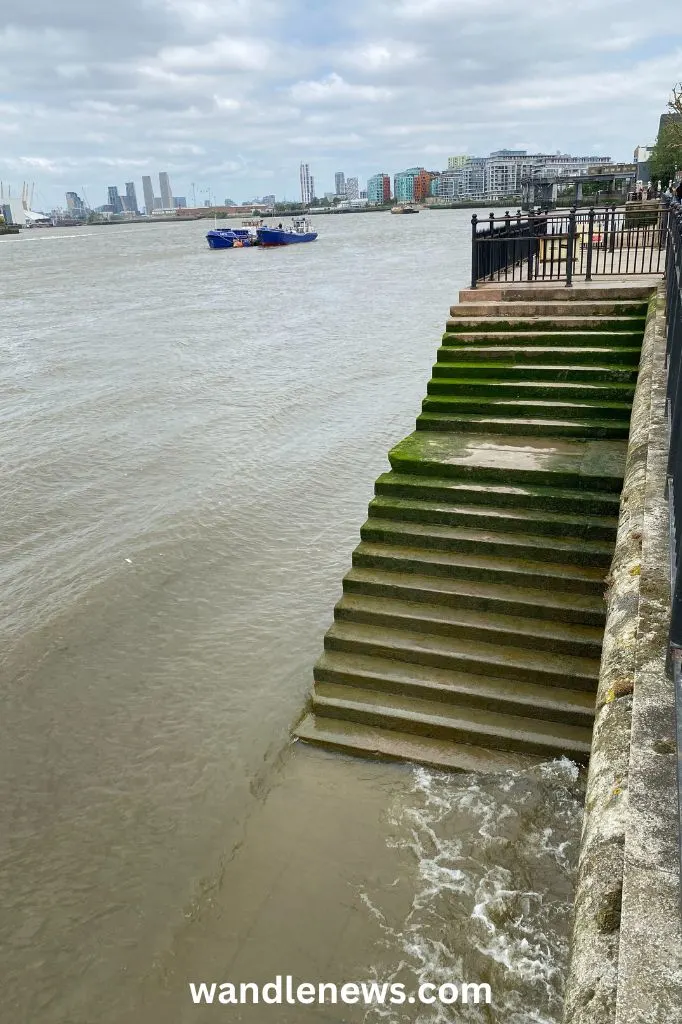
The stairs at the eastern end of the beach are shown in the photograph below. These steps are not safe to use, and lead up to an unsafe structure.
If you are exploring the eastern end of the beach, make sure you are aware of the tide times and ensure you have enough time to get back to the main staircase before the water cuts off your exit. If you need to call the coastguard on this stretch of the river, quote site reference GR18.
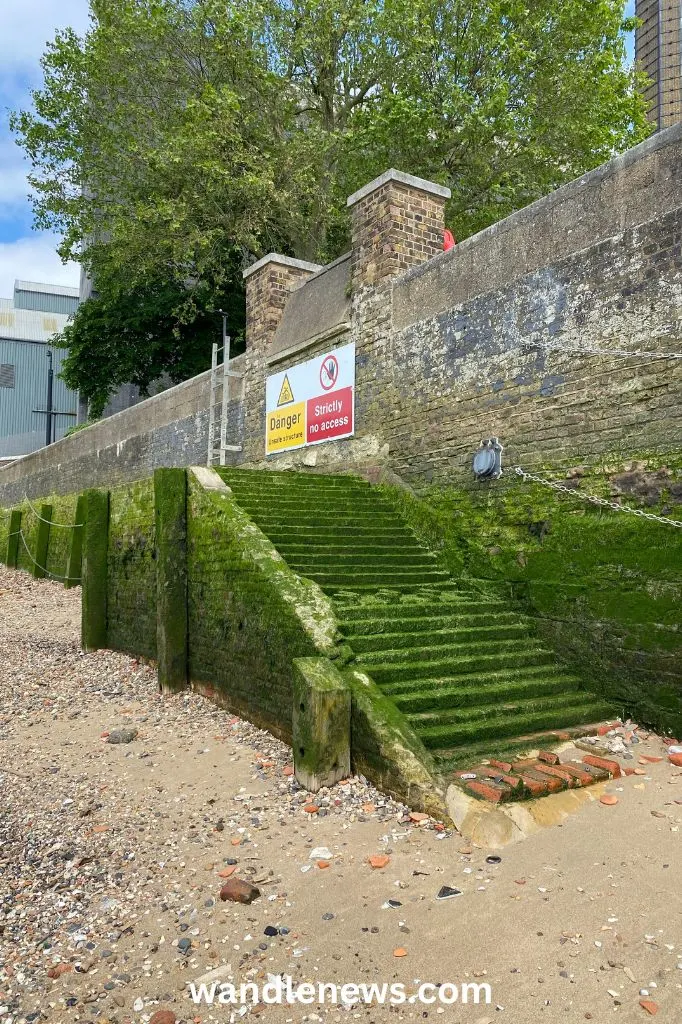
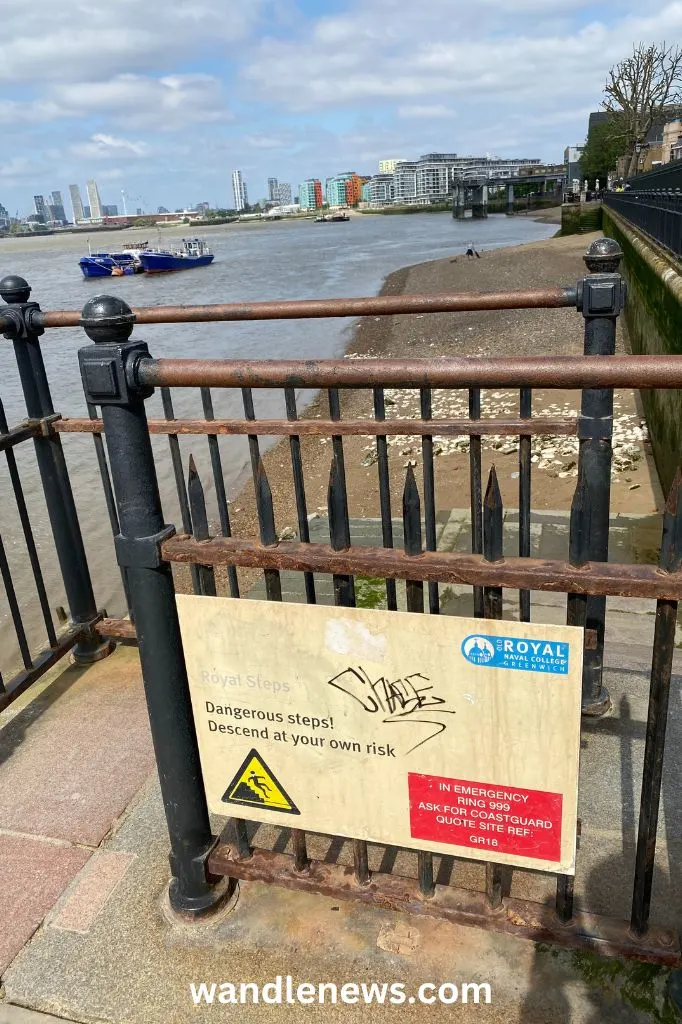
History of Greenwich Beach
Greenwich Beach was once the site of a royal shipyard connected to Greenwich Palace (renamed the Palace of Placentia by Henry VI’s wife, Margaret of Anjou). The palace was a royal residence, that stood by the river Thames between the 15th and 17th centuries.
Greenwich was the ideal location for the royal family in Tudor and Medieval times, since it provided easy access to the river, and was far enough away from the noise and diseases of London.
Next to the palace in Greenwich, there was also once a royal park where deer and boar roamed free.
Today, the remains of the original jetty that belonged to the palace can still be seen on Greenwich Beach. Mudlarks have also discovered boar tusks and deer antlers, from the animals that once lived in the royal park.
In the photograph below, the posts you can see were part of the jetty connected to Greenwich Palace. They date back to Tudor times (according to the Museum of London), and were part of Henry VIII’s pontoon. Nearly all of the objects found on Greenwich Beach by mudlarks, have some association with the palace, including cooking pots and dishes.
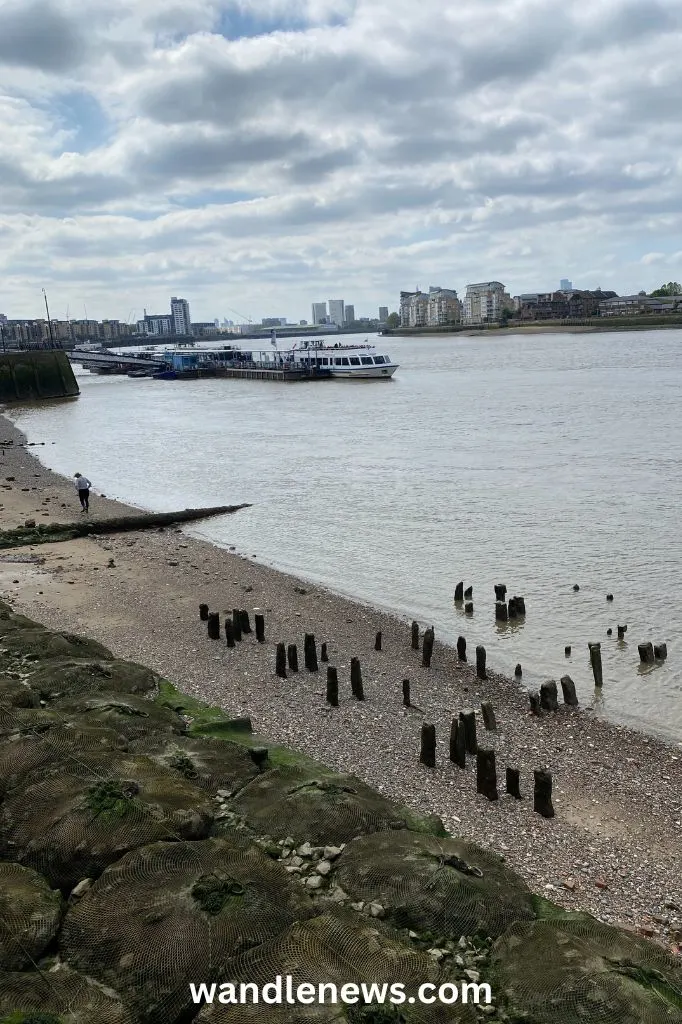
Mudlarking on Greenwich Beach
Greenwich Beach is a great place for mudlarks as many objects from Greenwich Palace have been uncovered here. At the site of the palace itself however, mudlarking is not permitted. This section is shown in red on the map below. No digging, metal detecting, searching or disturbance is allowed in this area.
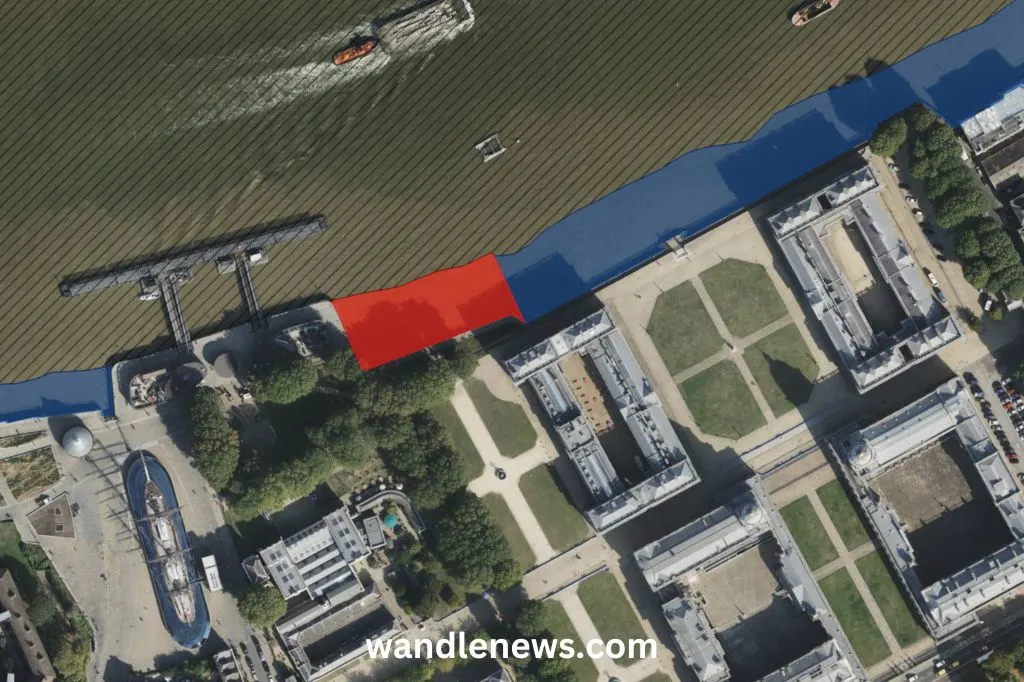
This map shows all the areas along the Thames where mudlarking is not permitted.
To help you identify the area where you are not allowed to mudlark in Greenwich, I have marked it with a red rectangle in the first photograph below. The second photograph shows the exact area where the Palace of Placentia was once situated by the river.
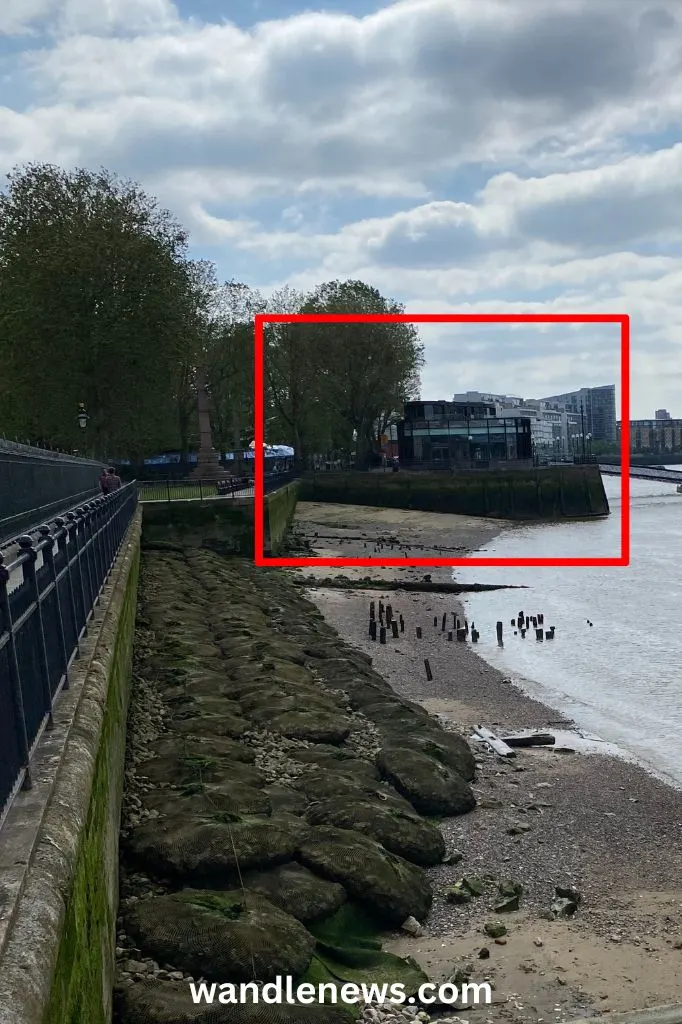
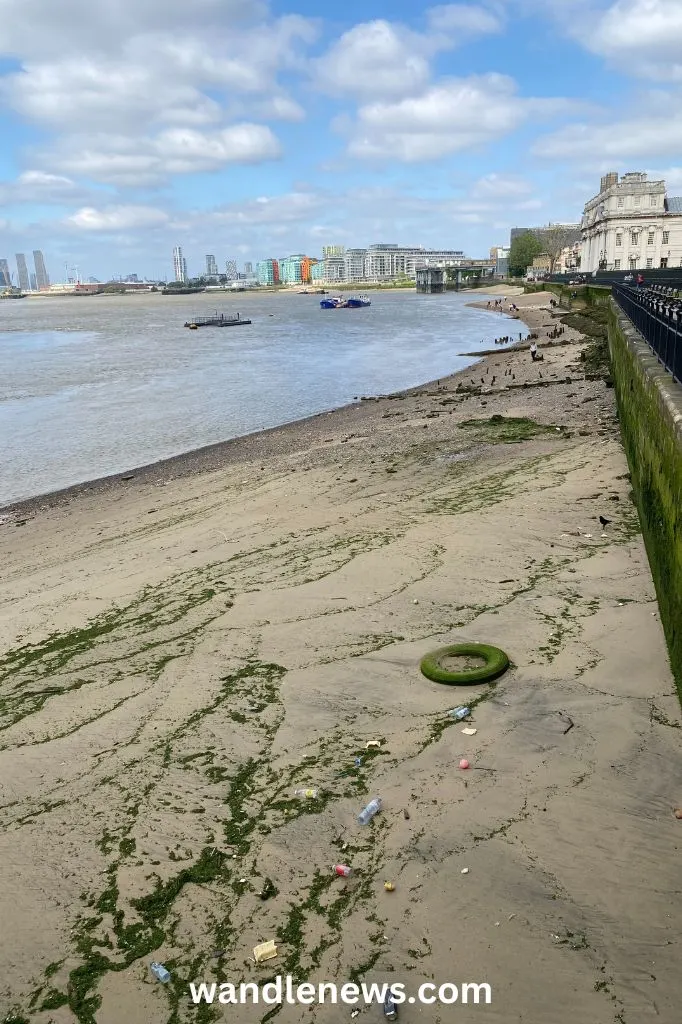
Mudlarking Finds on Greenwich Beach
If you are mudlarking on Greenwich Beach, most of the western end is mud, and most of the eastern end is large stones, pebbles and animal bones. The central area is almost entirely sand. For some reason clay pipes, bones and pins all tend to wash up in clusters in different parts of the beach.
In the first photograph below you can see a cluster of clay pipes I found in the sand. They all collected in one location, and were no where else on the beach. Nearly all the animal bones tend to collect at the eastern end of the beach.
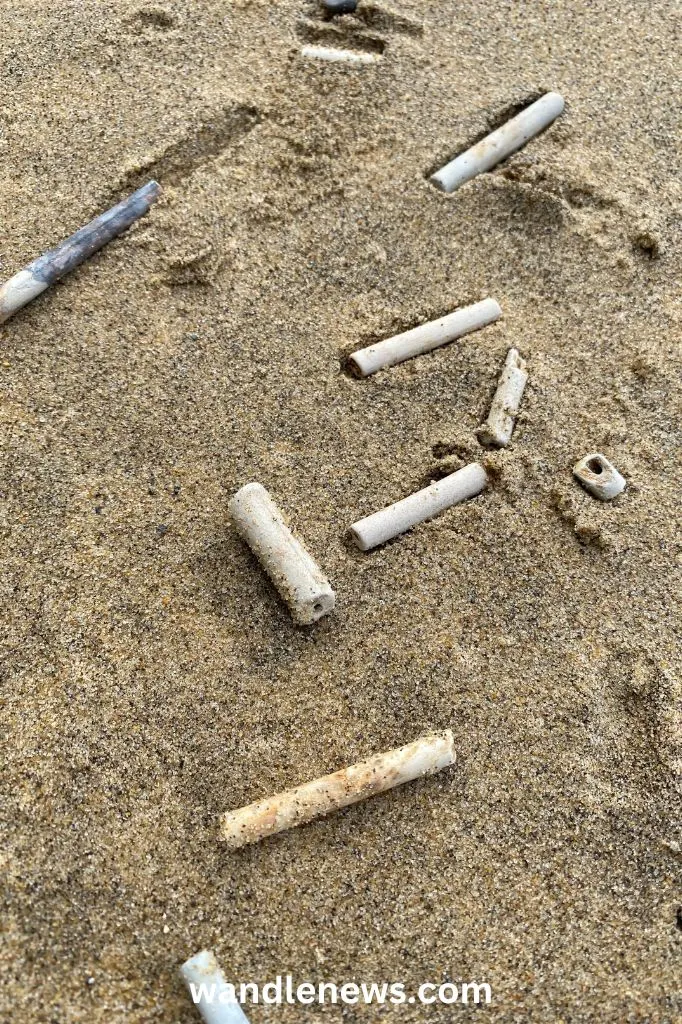
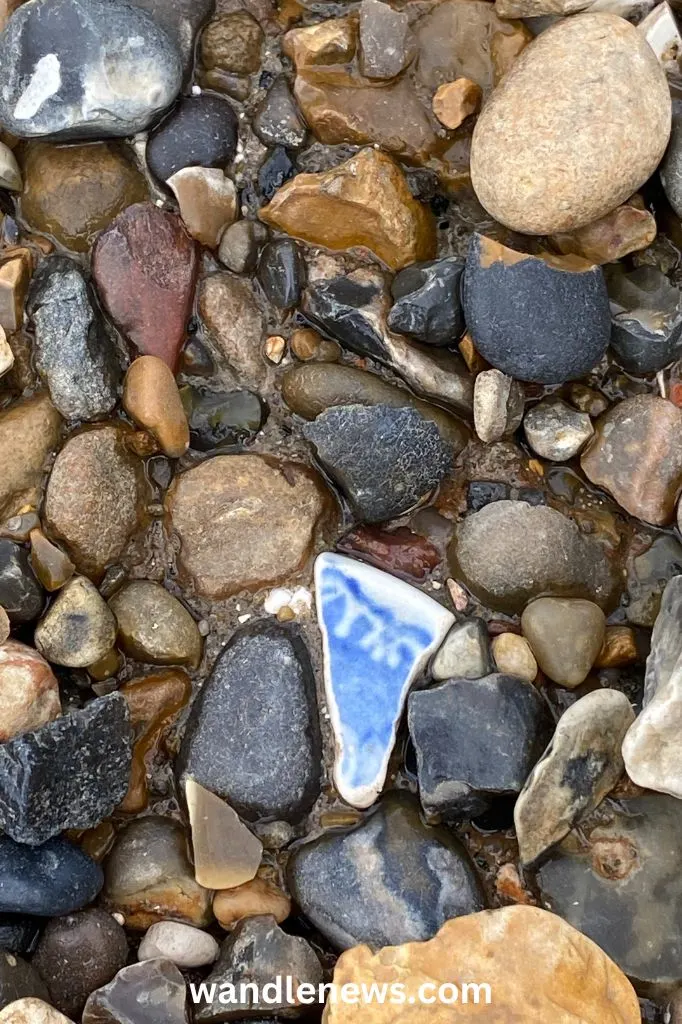
The eastern end of the beach also has large amounts of Victorian sewer pipe. I found hundreds of pieces of Bazalgette’s sewer pipes lying amongst the animals bones and pebbles. There are also small pieces of pottery everywhere.
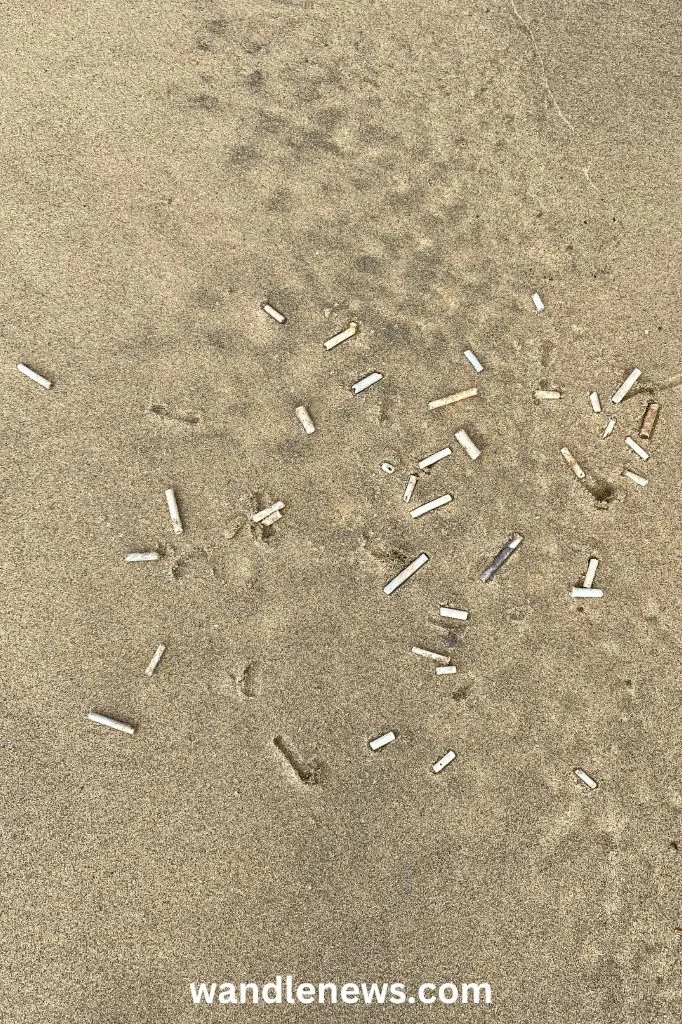
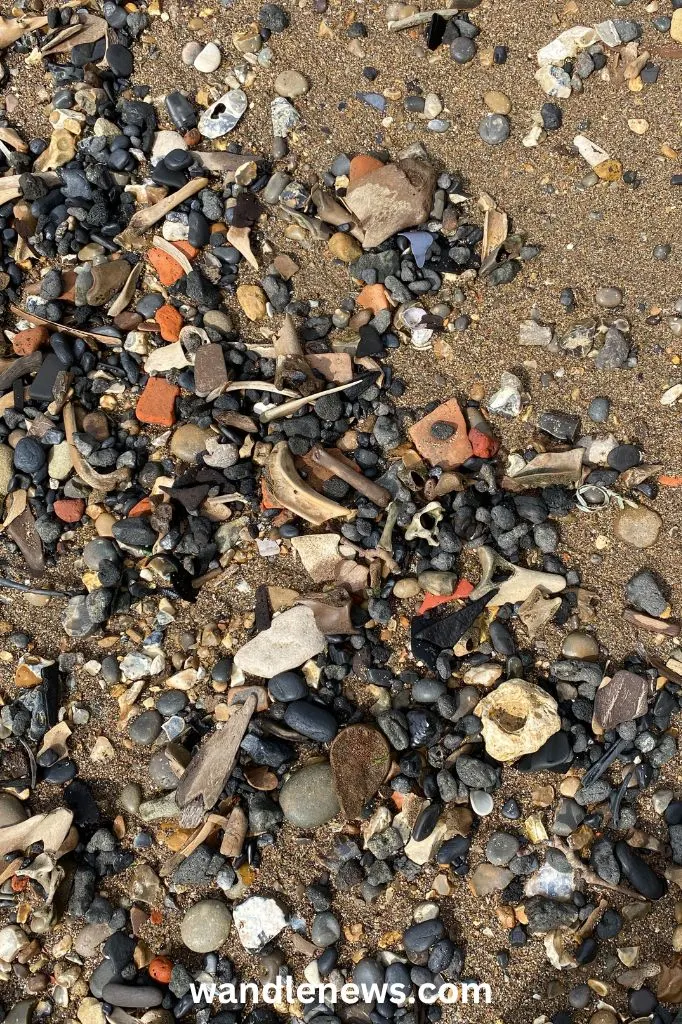
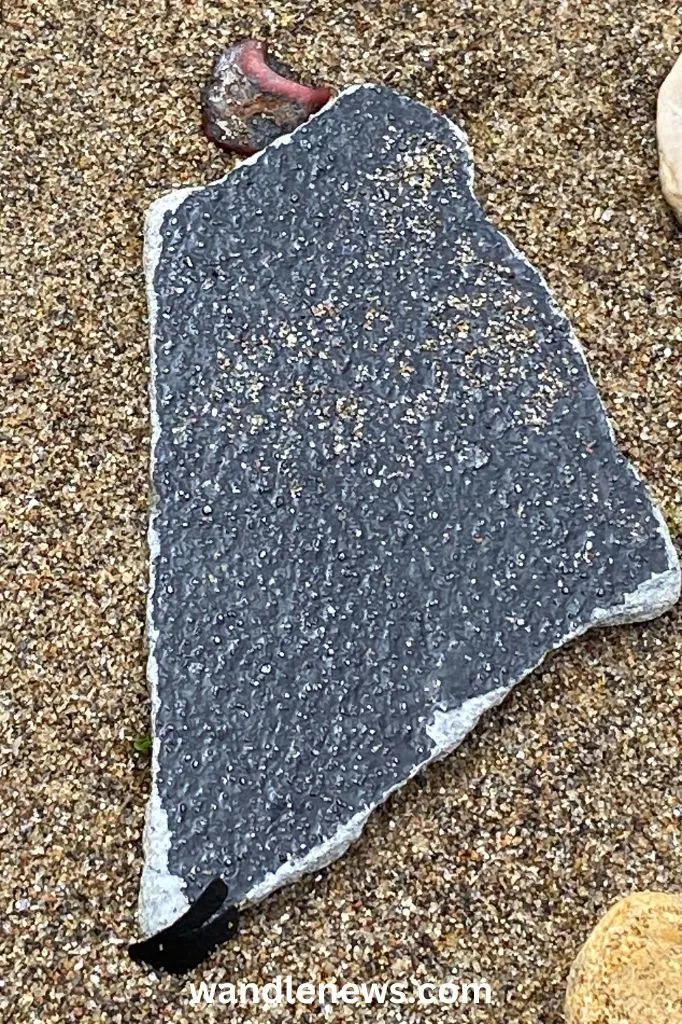
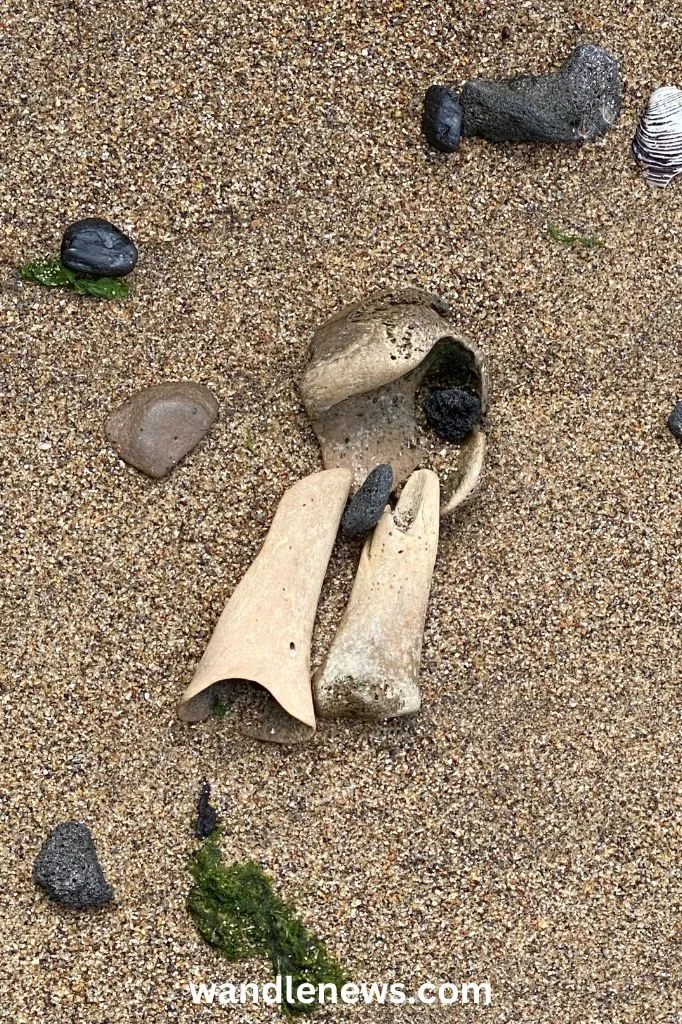
Mudlarking on Greenwich Beach in Victorian Times
At the eastern end of the beach you will find the Trafalgar Tavern. This is one of the oldest pubs on the River Thames, and the location of the “whitebait dinners” where, in the 19th century, Liberal politicians would meet to eat fresh whitebait from the Thames. It was an annual traditional for government ministers to travel to the Trafalgar Tavern from Westminster by barge.
This stretch of the Thames foreshore was a popular place for mudlarks in Victorian times, and it is believed that upper class people would throw pennies at them from the windows of the Trafalgar Tavern. Some child mudlarks would apparently perform tricks in the hope that their audience would throw more pennies.
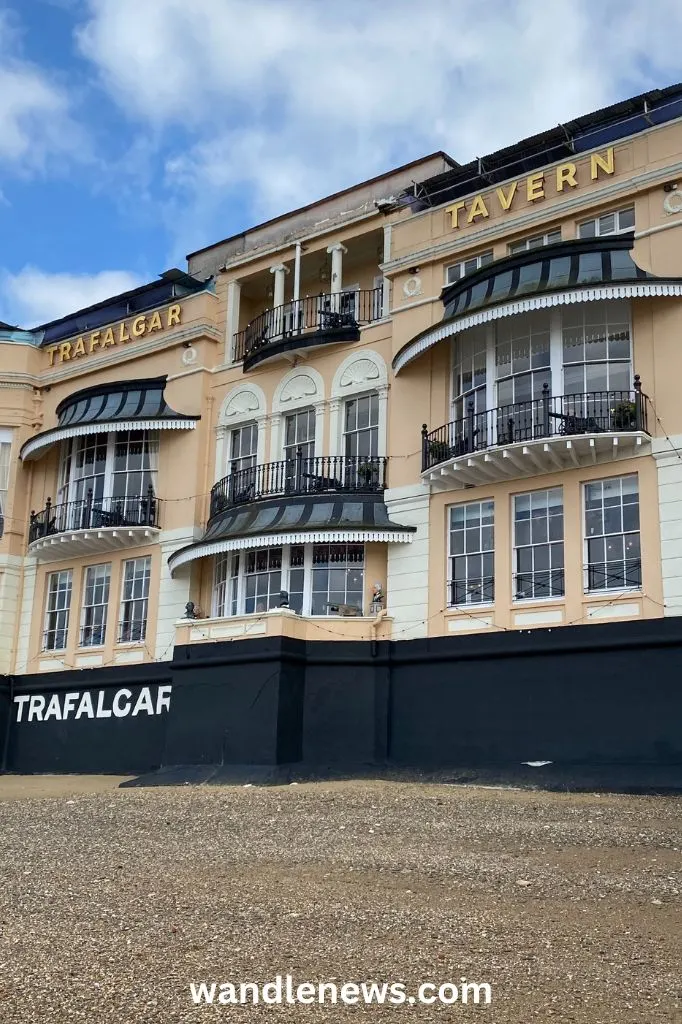
Video of Greenwich Beach
Below is a video I made when I visited the beach.
Images
Below are some of the photographs I took when I visited Greenwich Beach.
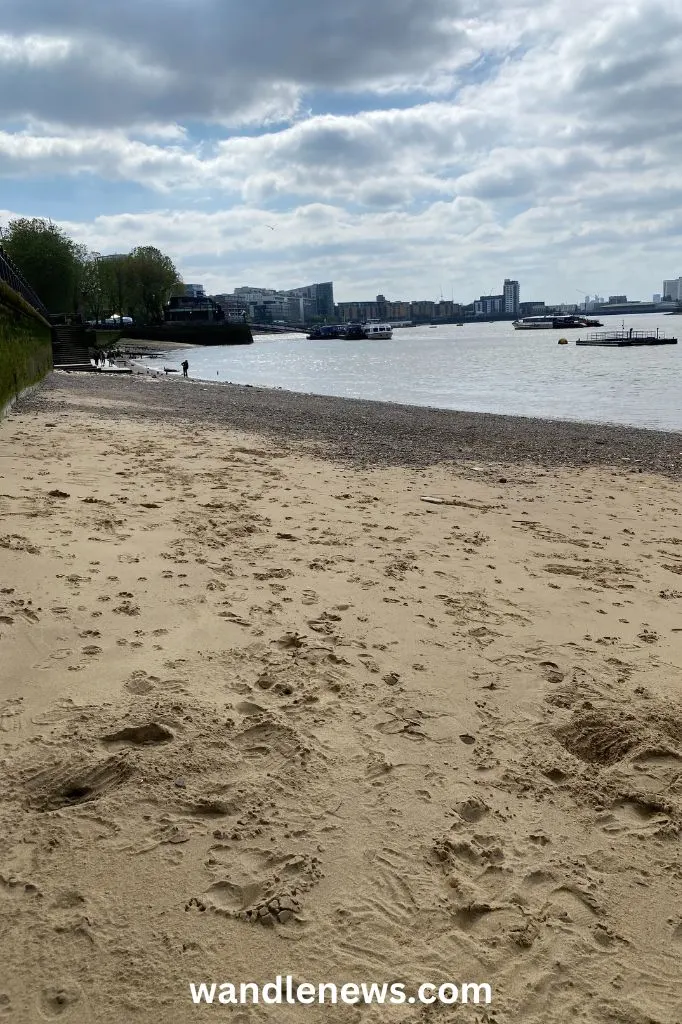
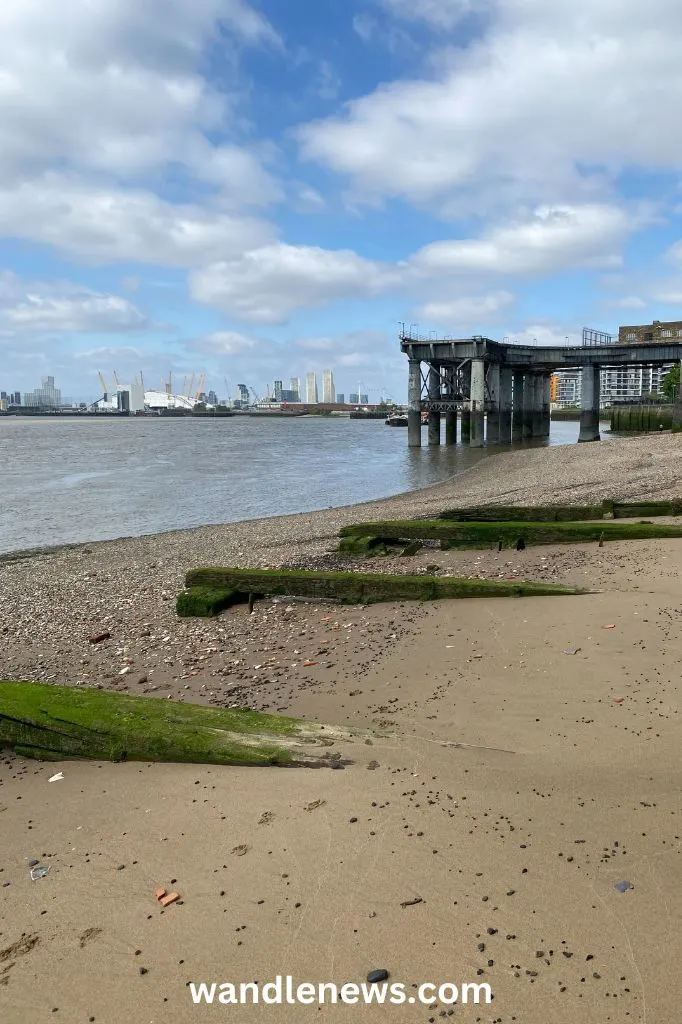
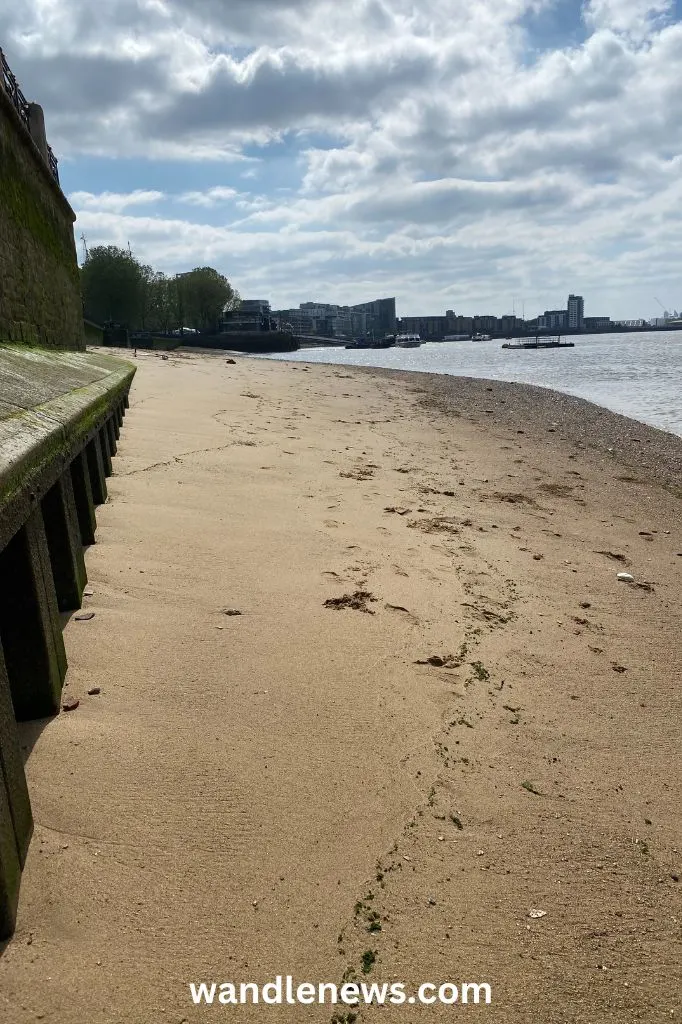
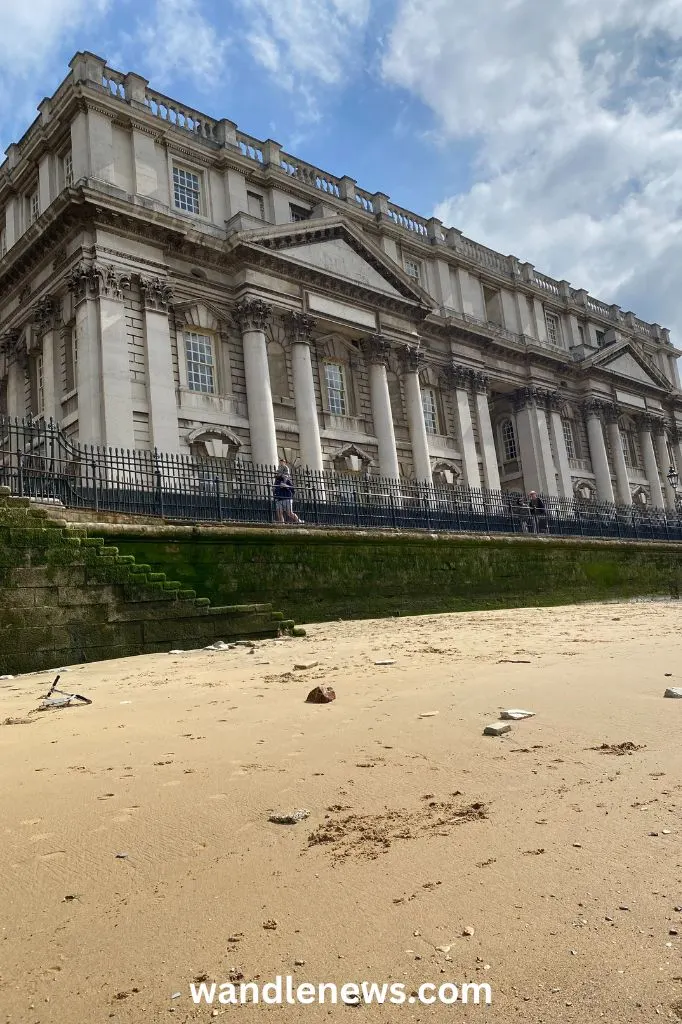
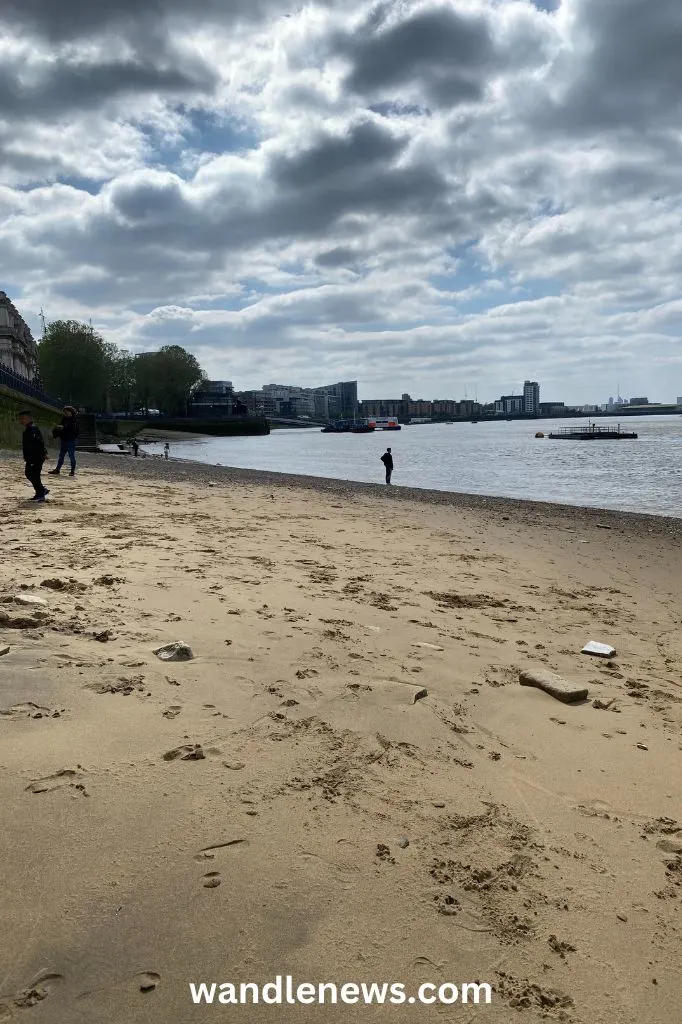
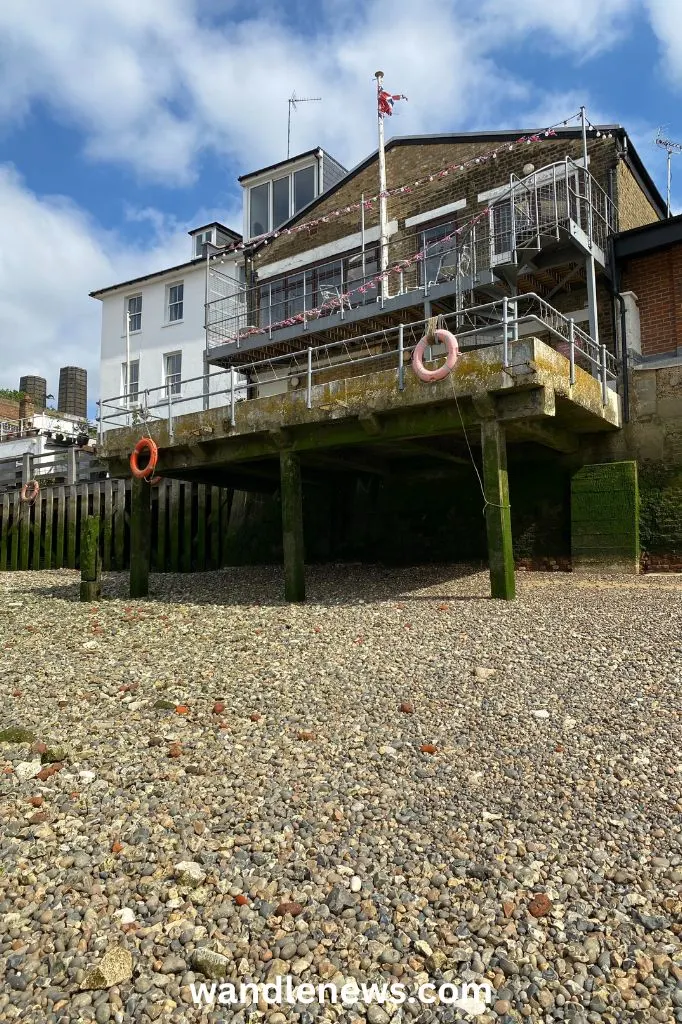
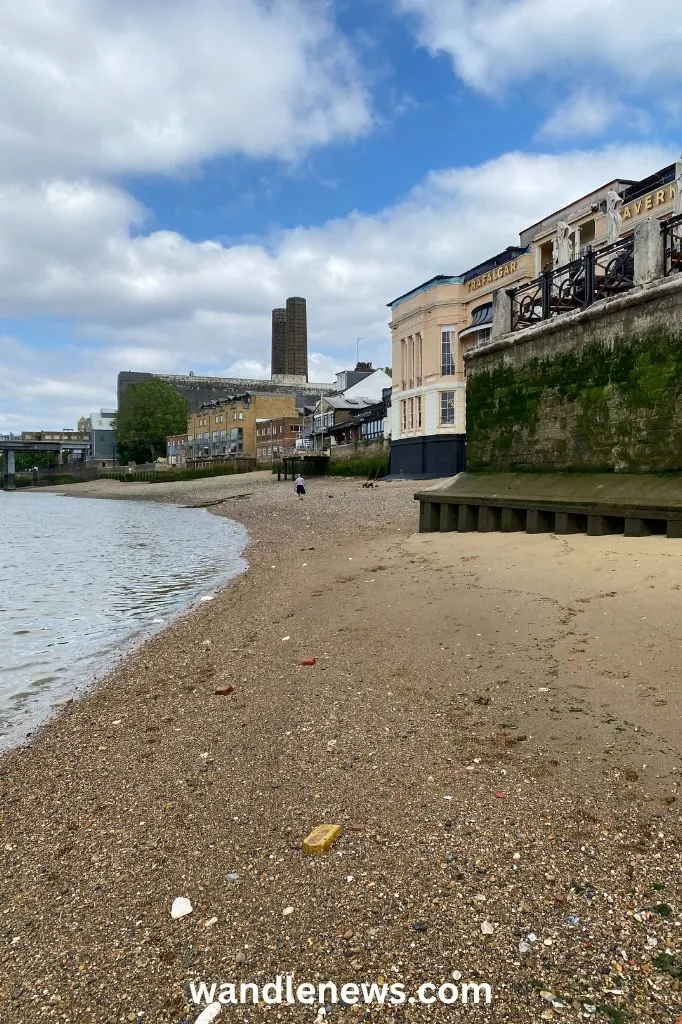
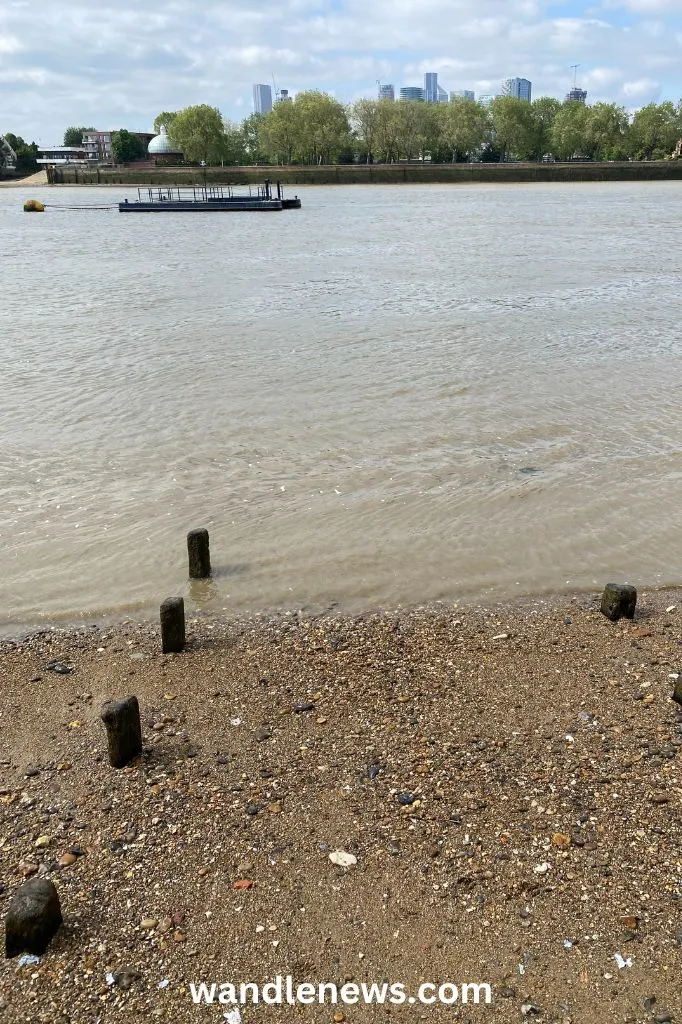
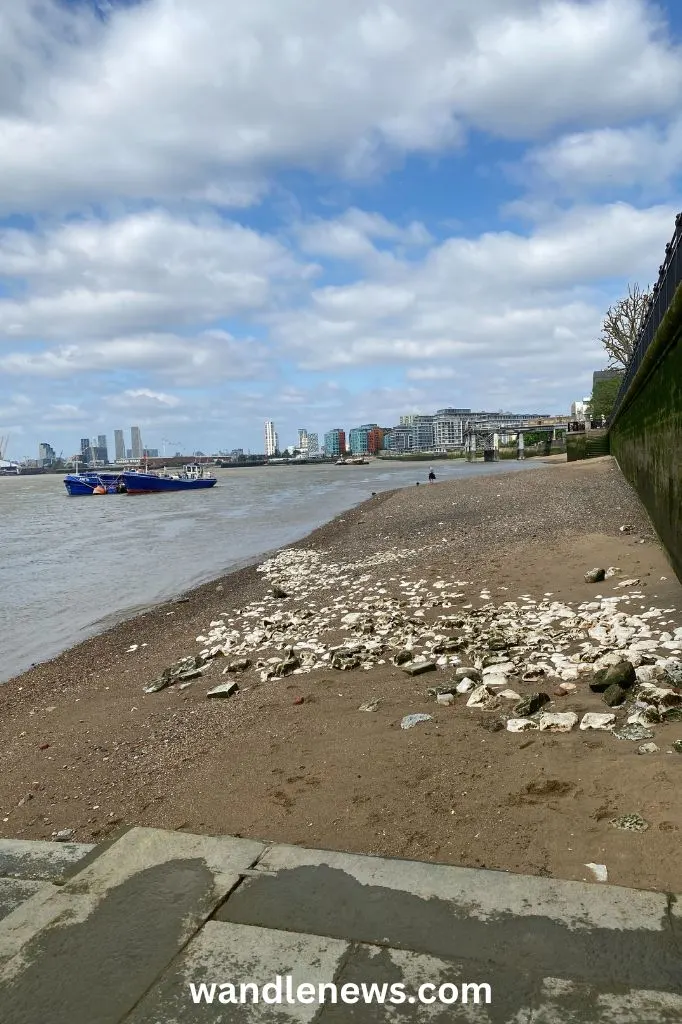
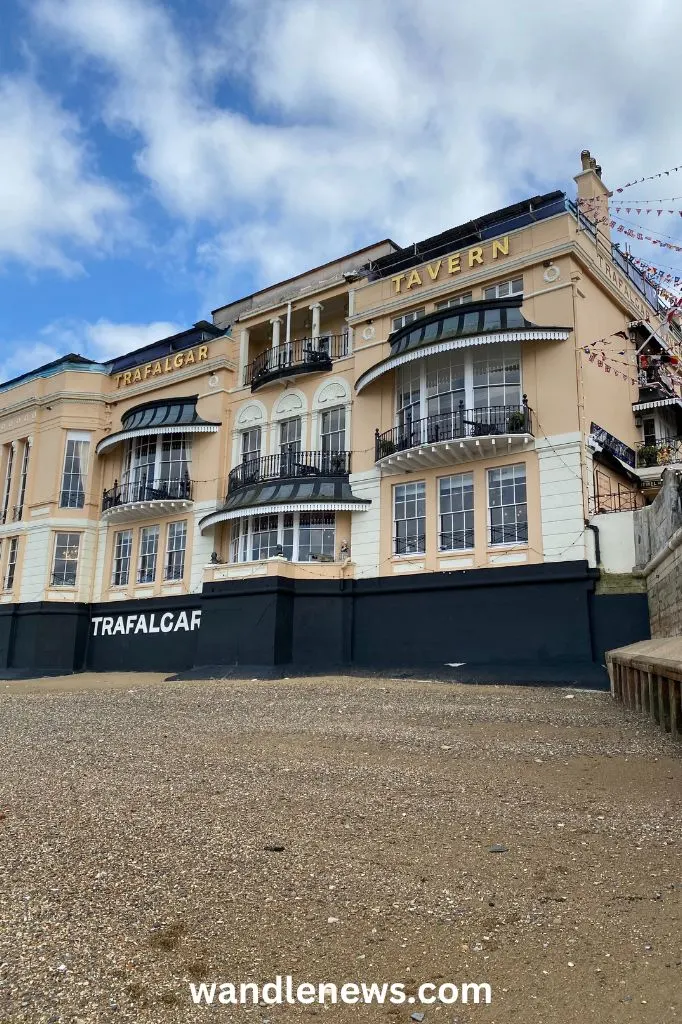
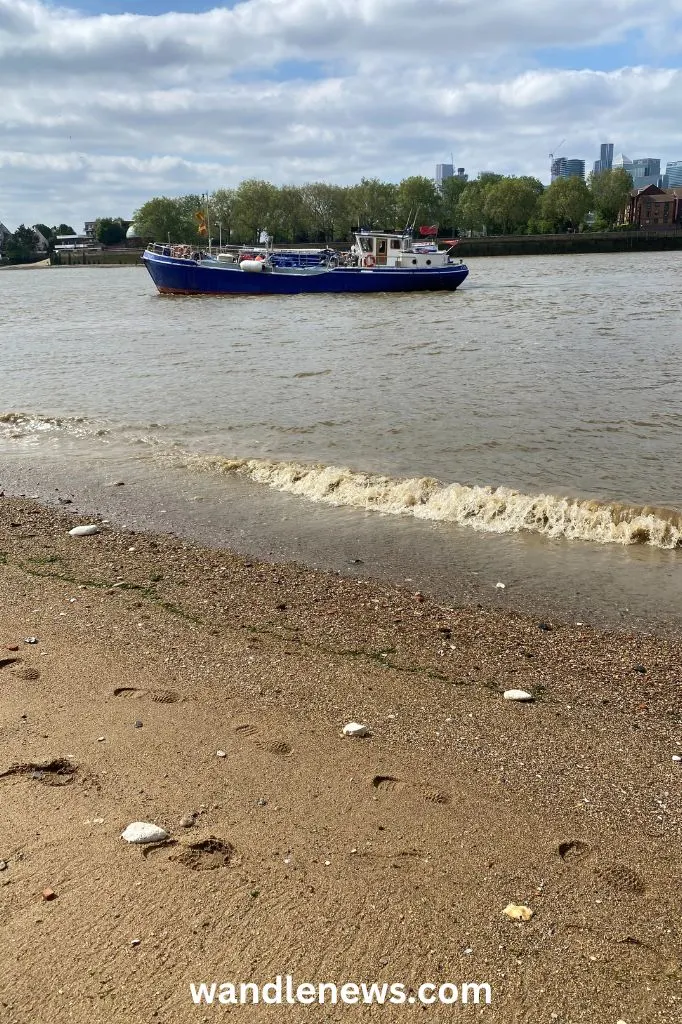
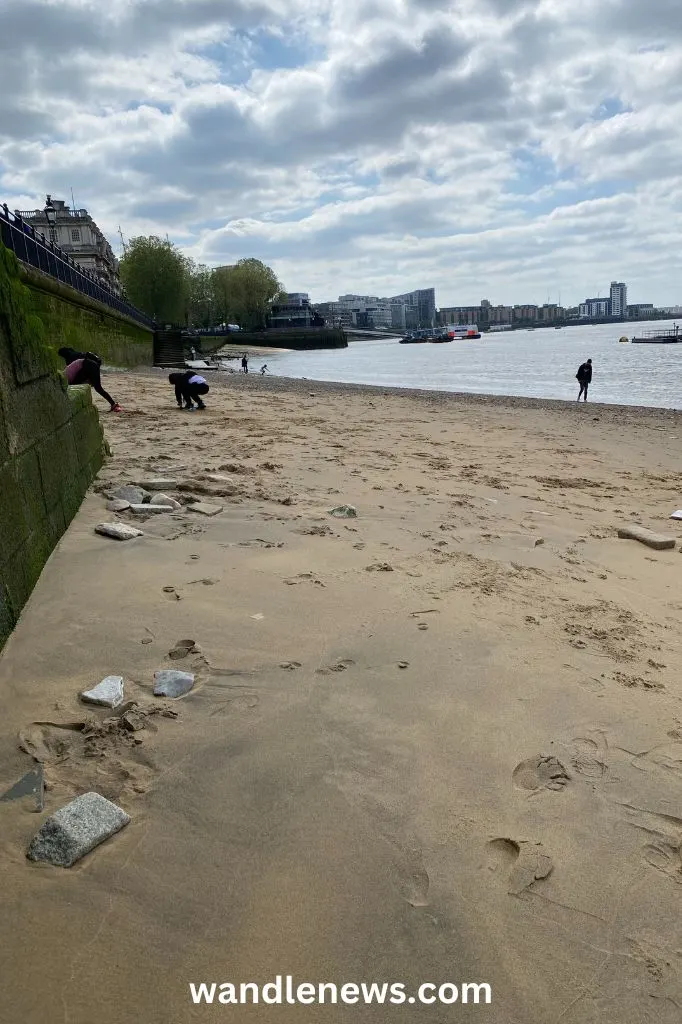
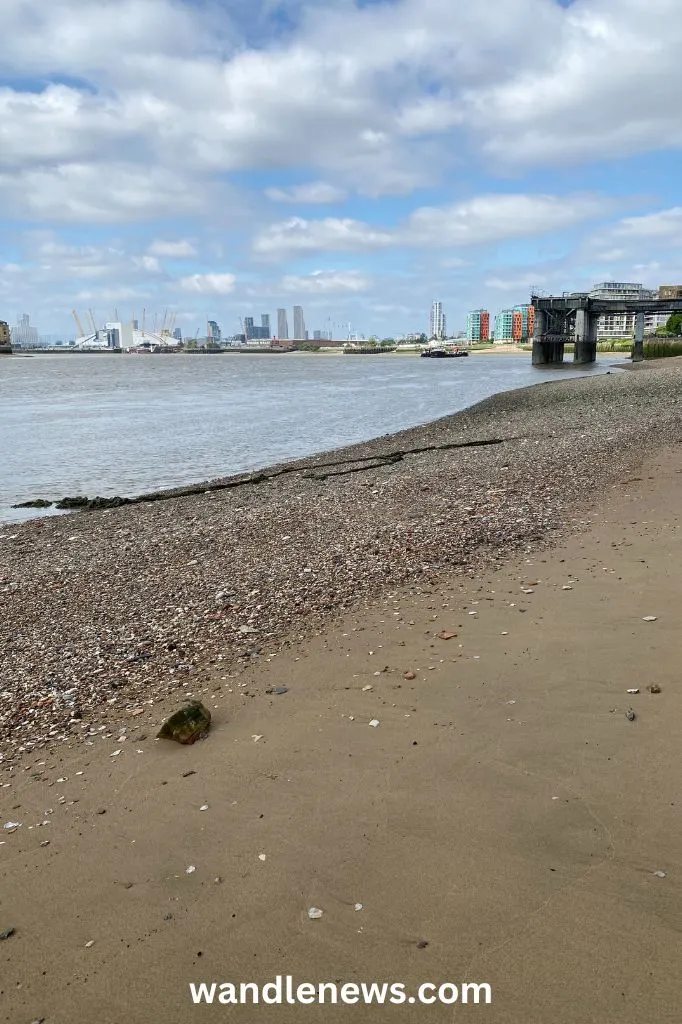
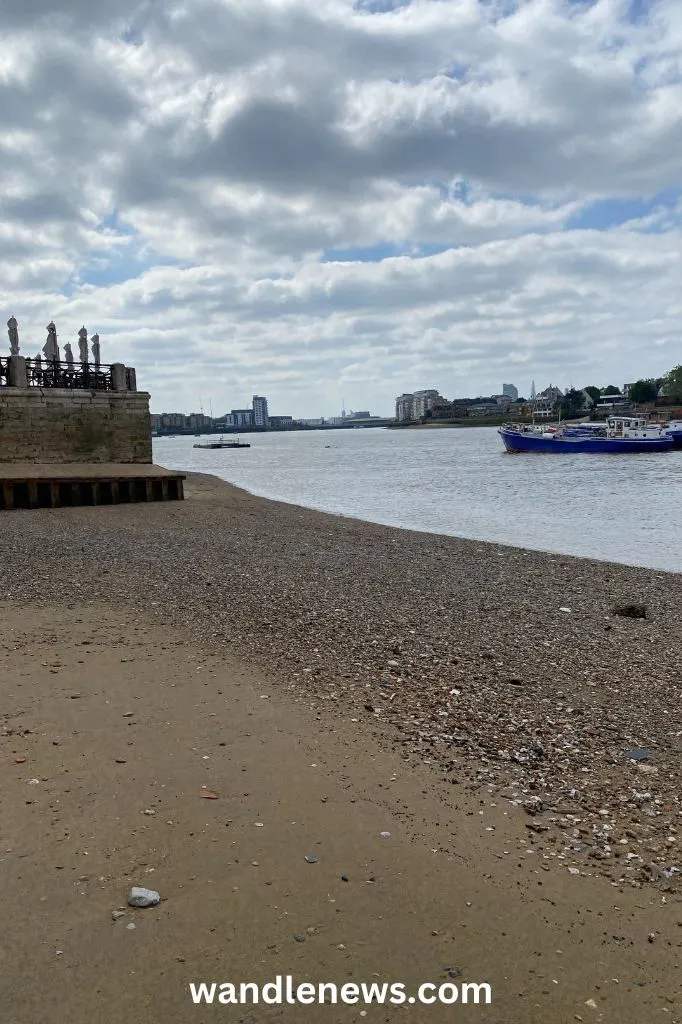
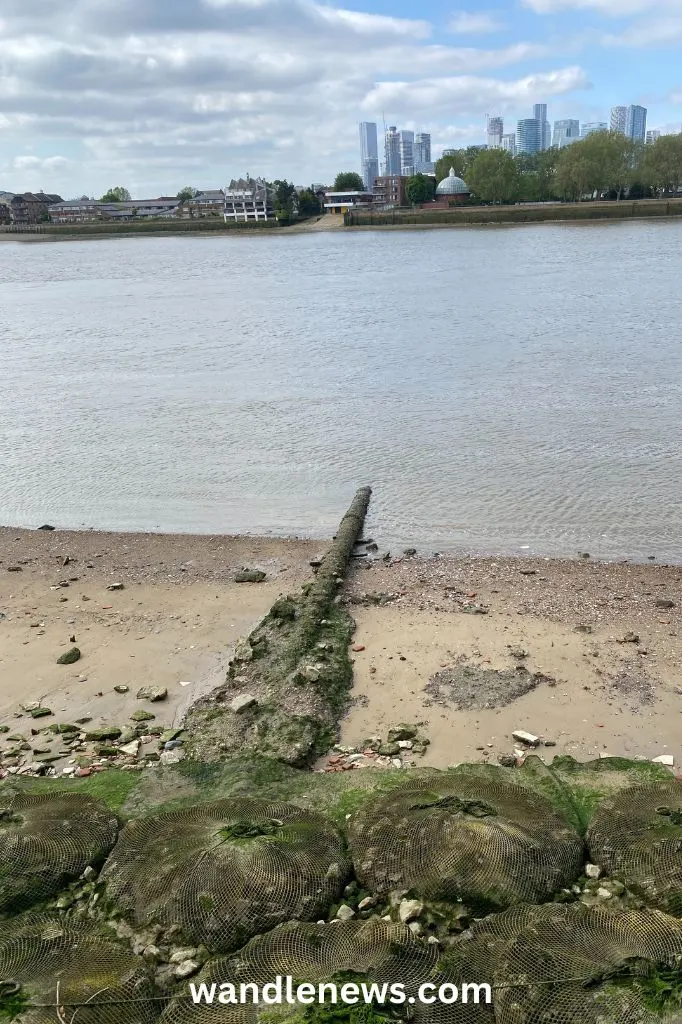
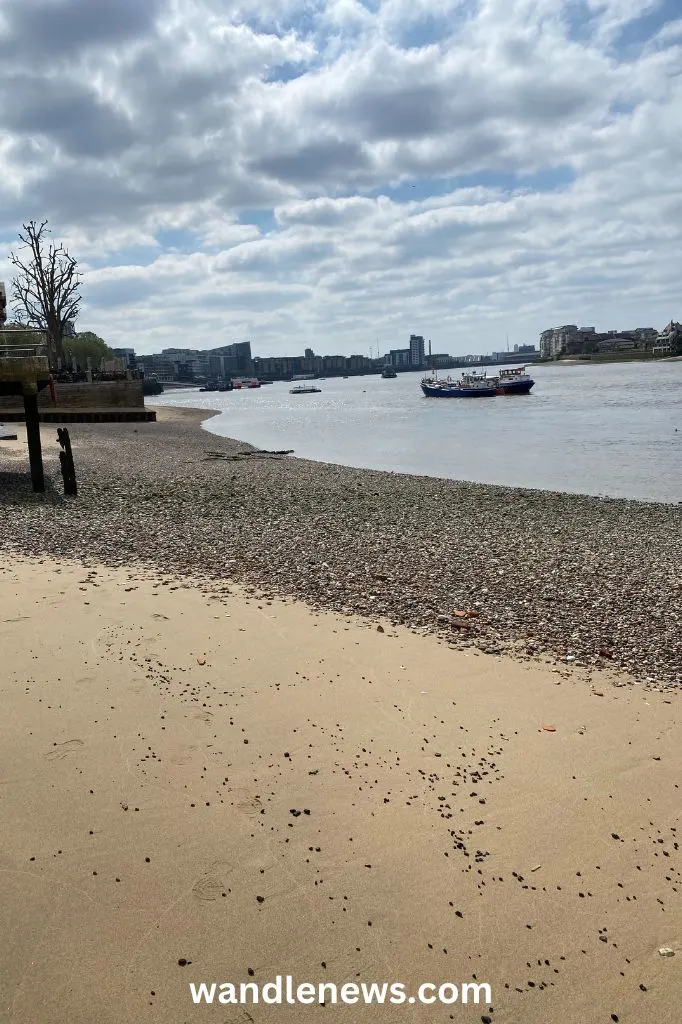
Other Beaches on the River Thames
Below is a list of other beaches on the river Thames in London.
Useful Posts for Mudlarks
If you are interested in mudlarking, you may find the following posts helpful.
- A Guide to Mudlarking on the Thames in London
- 3 Best Mudlarking Books for Beginners
- Thames Foreshore Access Points for Mudlarks
- 6 Best Beaches on the River Thames for Mudlarks
- Mudlarking Under Millennium Bridge on the North Side
This Post Was About Greenwich Beach on the River Thames in London
Thank you for reading my post about Greenwich Beach. This beach is completely covered at high tide, so make sure to check the tide times before you go.
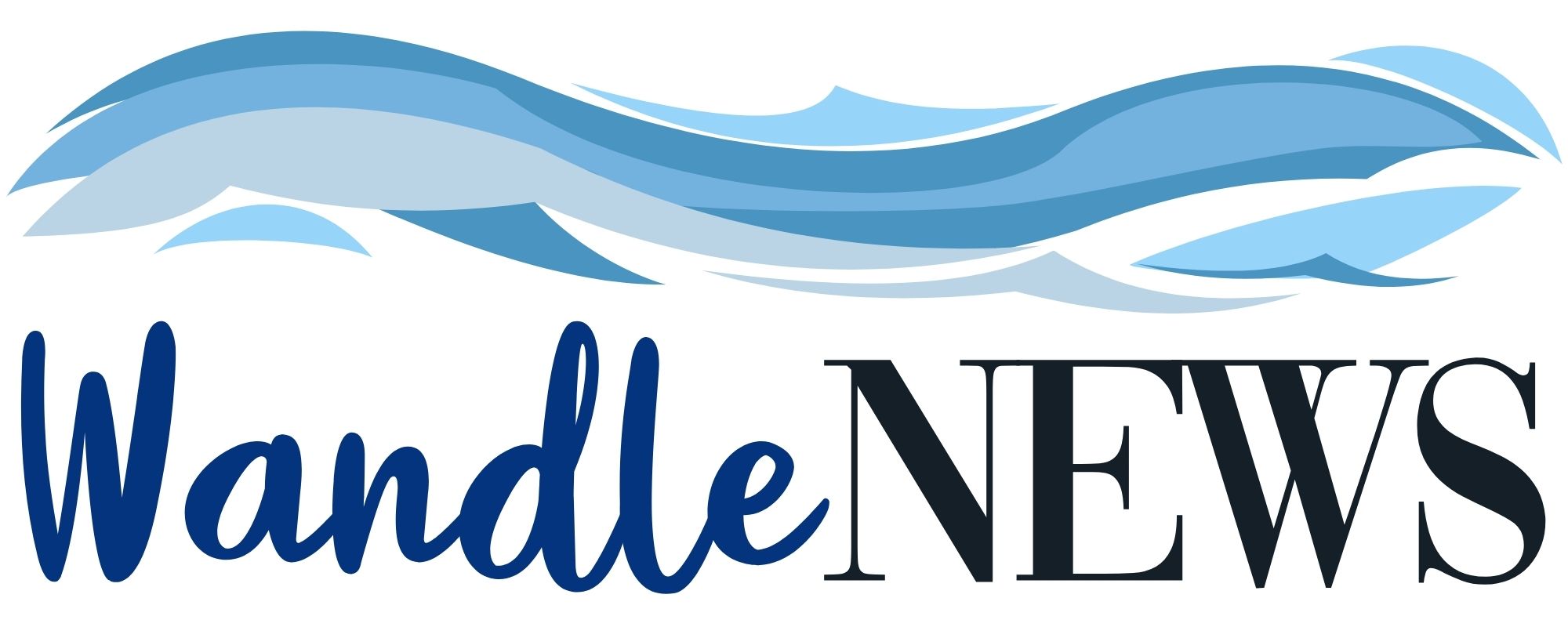
Teresa
Thursday 1st of June 2023
Really enjoyed your latest post on Greenwich Beach full of interesting historical facts and photos . Thanks Olivia , looking forward to visiting ourselves in the summer.